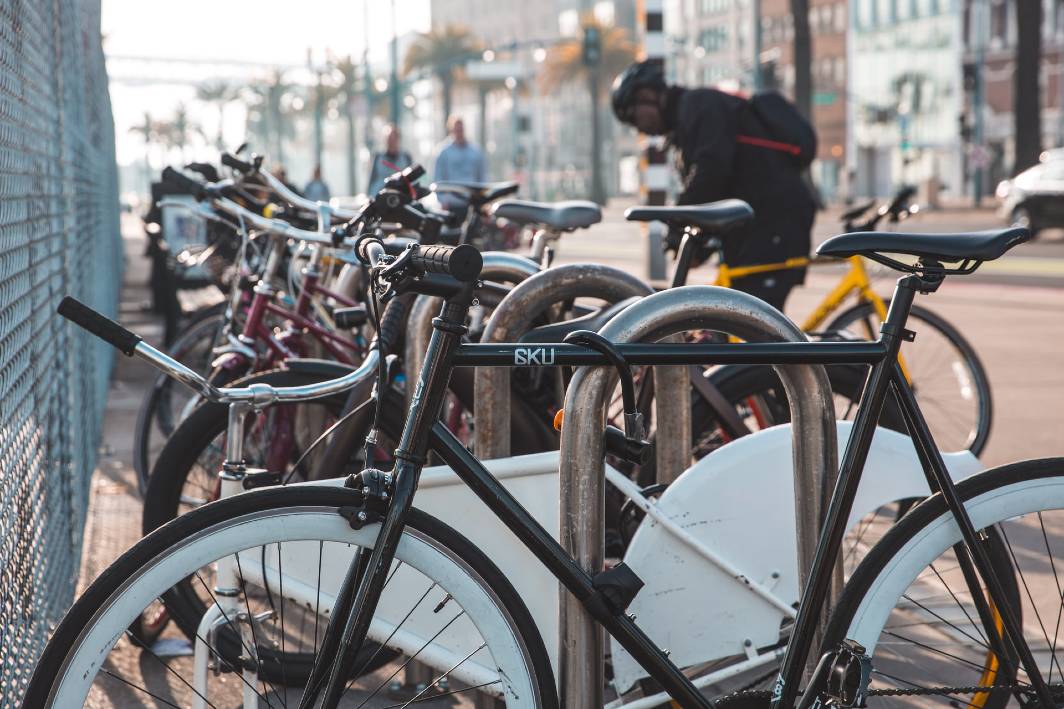How COVID-19 has brought us the low-carbon commute
“Bomb us with bicycles…The £80bn projected to be spent on the HS2 rail link[…]could buy every adult in Britain a carbon-frame bike.” James May, best known as a former presenter of Top Gear, isn’t the most obvious champion of getting around on two wheels. His words last week show how the coronavirus outbreak has sparked a national conversation on transport.
We’ve known for a long time that to reduce our greenhouse gas emissions to sustainable levels, the UK would need to see a drastic change in its travel habits. Last May’s Net Zero report from the Committee on Climate Change (CCC) pointed out that UK transport would need “stronger and more effective policies” to help the government reach its target of net zero greenhouse gas emissions by 2050.
The CCC report suggests that the government “ensure that road infrastructure encourages people to view cycling as a safe option”. The government’s Cycling and Walking Investment Strategy of 2013 already had the aim of doubling cycling by 2025, but it was looking very unlikely that this would be achieved.
But then the coronavirus hit. At the start of the lockdown, road traffic dropped to levels that hadn’t been seen since the 1950s. Traffic has increased since then, but only to a level that the president of the AA described as “akin to those in the early 1970s”. Simply by taking most of the cars off the roads, the virus found a way to make cycling and walking feel safer, without building a single kilometre of lane or pavement.
Active travel is now experiencing a revolution. According to retail data collected by the Bicycle Association of Great Britain (BAGB), many people have taken the step of investing in a new bike. A BAGB spokesperson told the Energy Advice Hub: “Early indications are that this April saw at least a 50% increase in sales across the whole cycling market. A survey we did suggests that about 7 in 10 bicycle sales in lockdown are to new or returning cyclists. This is very different to previous years when the reverse would be true, and points to many people turning to cycling as an essential form of transport.”
It has taken a spiky microscopic pathogen to set the UK’s transport habits on a more low-carbon path. But the government seems committed to maintaining these higher levels of active travel. Transport minister Grant Shapps recently said: “When the country gets back to work, we need [new cyclists] to carry on cycling, and be joined by millions more. With public transport capacity reduced, the roads in our largest cities, in particular, may not be able to cope without it.”
Public transport will probably end up running at around 10% of previous capacity, so the government has a strong motivation to stop the other 90% jumping into cars – not just because it would be disastrous in terms of greenhouse gas emissions, but because there simply isn’t enough space on the roads.
Can the “new normal” get us to net zero?
The UK’s carbon emissions fell by more than a third at the height of the lockdown. (Although transport wasn’t solely responsible for that drop, road transport is normally one of the biggest sources of carbon emissions for the UK.) The challenge for government and businesses is how we ease into the “new normal” without sending emissions shooting back up to levels that threaten our ability to reach the net zero target.
In Wuhan, China, private car use doubled after lockdown, but other cities around the world have learned from this. Cities including Paris, New York, Milan, Berlin and Bogotá have all followed broadly the same strategy of updating their infrastructure to encourage active travel – and it’s worked to keep traffic at manageable levels. The UK is following more slowly, but “pop-up” bike lanes are appearing in many major cities, and Transport for London has changed over 1100 sets of traffic lights so that pedestrians don’t have to wait so long to cross the road.
On routes with no separate infrastructure in place, motorised traffic reduces both the safety and perceived safety of cycling. One podiatrist recently posted pictures on social media of how he scrawls “NHS” on the back of his cycling jersey to keep himself safer from “numerous incidents of being buzzed while trying to visit patients or get to hospital”. In Leicester, the council has tried to protect key workers who cycle to work with a separated bike lane leading to the hospital. This “key worker corridor” was created very cheaply, with traffic cones and plastic barriers, but it was so successful they extended it within days.
Not every large employer can expect its local authority to create a dedicated cycle route for its workers, but most cities in the coming months will be working to encourage cycle commuting. This will have an effect on staff transport choice, and any business planning to reopen in the coming weeks or months should take this into account.
Commuting and SECR
Under the government’s Streamlined Energy and Carbon Reporting (SECR) guidelines, businesses aren’t obliged to report the emissions from employee commutes, but it is encouraged as a voluntary option.
Businesses that want to do more than the minimum can start measuring the carbon emissions associated with getting to work, then think about how to support lower-carbon journeys.
Employees getting to work by bike will need as a bare minimum to have somewhere to lock their bikes. Ideally cycle stands will be covered, well-lit and near the main entrance of the building. It’s tempting to cram them together to fit more into the same space, but it’s a better idea to allow space between them to support social distancing. That still means you can fit at least three bikes in the same space as a single car, making it a relatively efficient use of space.
Businesses should also consider supporting a less strenuous option for low-carbon commuting: electric bikes. There are many myths surrounding these, including the idea that they can’t be a green option because they require power to run. In reality, when the European Cycling Federation compared the carbon footprint of e-bikes, it found they produce about 22g of carbon per kilometre. That’s much closer to the carbon footprint of a regular bike (21g/km) than the average car (118g/km). Crucially, they provide a realistic alternative to driving for many who would find it too difficult to ride an unassisted bike. Businesses that are committed to reducing the carbon footprint associated with getting to work should consider an e-bike hire or loan scheme to help with the cost barrier.
Electric cars are also on the up, as the government works to make them a more attractive option (most recently through announcing the rollout of a network of new charging points). We don’t know exactly how much take-up will increase in the next couple of years, but any business aiming to future-proof the reopening of its premises would be smart to include provision for charging both electric bikes and electric cars.
Switching up the 9-5
For those workers who still need to drive a petrol-powered car or use public transport, there are still some options. A 2015 report from the Department of Transport states that “Commuting places a disproportionate burden on the transport network due to the relative length of these journeys and their concentration at particular times of day.”
Switching some employees’ commutes to a quieter time of day may reduce emissions by reducing journey times. It is possible that the government will follow Japan’s lead and introduce staggered working hours to ease congestion. But businesses don’t need to wait for it to be imposed from above; they can experiment with offering different shift patterns and see how it works.
Working from home was already a growing trend before the pandemic, but necessity has accelerated this and forced companies to get to grips with the technology required for remote working. Government advice is still to work from home if possible, and for employers to take “all reasonable steps” to enable this. It seems likely that many “office” jobs will continue to be done from home for the foreseeable future, yet another way in which businesses have unintentionally cut their carbon footprint as well as office costs.
Other unforeseen benefits and downsides to this shake-up in our transport patterns will be seen as time goes on. Most businesses will be working to adapt to the changes they’ve already seen. But whether you’re planning a reopening or you’ve been working flat-out through the lockdown, this moment is a chance for businesses to think proactively about how they actually want their workers to get around. It’s time to support the changes you want to see.












